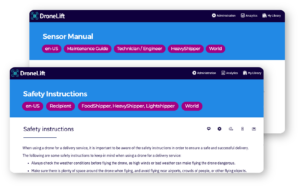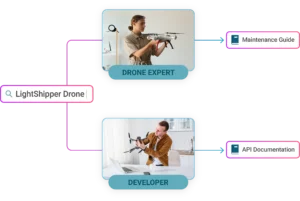In the first article of this series, “How AI is Reshaping Technical Writing: Structure”, we explored structured content — what it is, how to do it, and why it’s crucial to the Content Value Path. The Content Value Path is our solution to mitigating the challenges technical documentation teams face when looking to deliver content to new technologies like AI applications.
In this second part of our three-part series, we’re diving into the next core element: metadata. Read on to uncover what metadata is, how it connects to structure from part one, what to consider when choosing metadata, and how automations can simplify this second step.
What is Metadata?
Metadata is data that describes other data.
There are several types of metadata with different purposes and added value:
- Content Management Metadata: This includes tags such as the date a topic was created, content author, and publishing status.
- Editorial Metadata: They describe the context and applicability of the content and, as such, are part of the content itself. This could be the product version the content applies to, the type of task described (i.e. installation, maintenance, etc.), or the required level of expertise.
Metadata can consist of dates, numbers, free keywords or, as we typically see in documentation, labels taken from controlled lists (i.e. flat or hierarchical lists used for taxonomies).
Additionally, teams may attach metadata to both topics and maps. In the case of maps, the metadata applies to all topics within the map.

How Do Metadata Relate to Content Structure?
The link between structure and metadata is simple. Metadata must unambiguously apply to all content within a topic to be meaningful and usable. Take, for example, a topic that contains information on both the installation and maintenance of a product. In this case, the topic needs to split into two distinct topics, with one containing information about the product installation and the other containing information about the product maintenance. By doing so, teams label topics more accurately so users and chatbots can find the information most relevant to their needs.
How Do You Choose Metadata?
Naturally, one of the biggest questions is how to choose metadata and with which values. There are many options and recommended best practices available, yet no universal answer. Each company’s ideal metadata depends on their products, their content, and how they intend for users to interact with their content.
Here are some typical use cases:
- Use metadata to create filters, also called facets, in your enterprise search engine so users can refine their queries. For example, users could choose to only see search results pertaining to a specific product or version. This improves search result relevance, helping users get the answers they need faster.
- Use in-product help, also called contextual help. These embedded tools use contextual information linked to the exact version of the product and its configuration to provide users with the right content as quickly as possible.
- Include a QR code directly on machines for on-site interventions. Then, the engineer, operator, or technician simply scans the code to access the exact maintenance documentation for that machine. This works because the QR code connects to a list of all metadata related to the machine’s subsystems and conditions, then uses that list to filter content.
For companies starting at the beginning of the metadata process, or for those who have chosen some metadata but aren’t sure how to proceed, we recommend you follow the steps below.
- First, develop some use cases involving storytelling and characters based on your customer profiles. Think about where typical users encounter a problem or a question related to your product.
- Next, identify the metadata they would need for support in these scenarios. Which search filter criteria would be necessary to extract the most relevant content?
- Align the metadata with the content. Here, you may have to adapt your content’s granularity, as mentioned in the first article on Structure.
If this last step feels somewhat daunting or even beyond your reach because you have thousands or even tens of thousands of topics, don’t worry. You’re not alone, and technology is here to help.
How to Automate Content Metadata Tagging?
Today’s automatic classification algorithms use the latest technological advances in Artificial Intelligence, and they are extremely accurate. They learn from a representative set of manually labeled topics (the supervised learning phase). Then, they proceed with tagging metadata on their own (the automatic classification phase). Consequently, with just a few hundred pre-labeled topics, you can tag thousands or even millions of topics in a matter of minutes.
Your team can also extend this method to tag content from any other sources (wikis, knowledge bases) to benefit from fully aligned documentation. Here, it’s important to note the need for topics with the right level of granularity. The more focused the topic’s content is, the more precise the algorithm’s labeling will be. This is particularly important for topics used for training the system. When done correctly, automatic tagging is equally as accurate as human-led labeling.
Continuing on the Content Value Path
Metadata and structure form two of the three essential pillars to developing a Content Value Path that prepares your content for new technologies like AI projects. Metadata has a direct effect on how easy it is for users to find the right content when they need it. In parallel, metadata impacts how relevant and personalized AI-generated responses are in user-facing tools like chatbots. While getting started may take some planning and manual tagging, new technologies exist to facilitate the metadata labeling process.
If you missed part one of this series on Structure, it’s not too late to go back and read up on the first requirement for modern documentation success. Otherwise, don’t miss the third article “How AI is Reshaping Technical Writing: Semantic Enablement” where we tackle the final component of the Content Value Path.
Latest post








